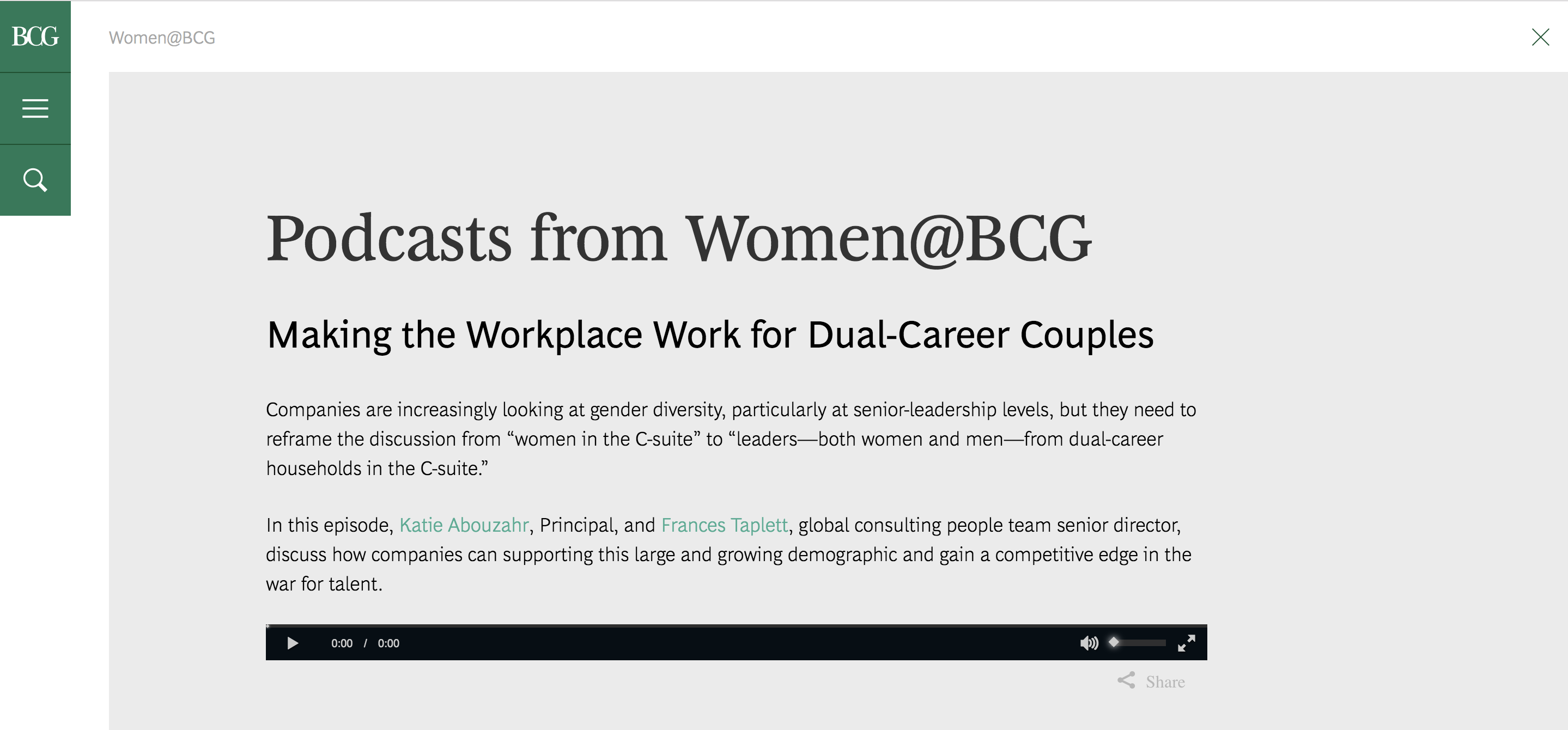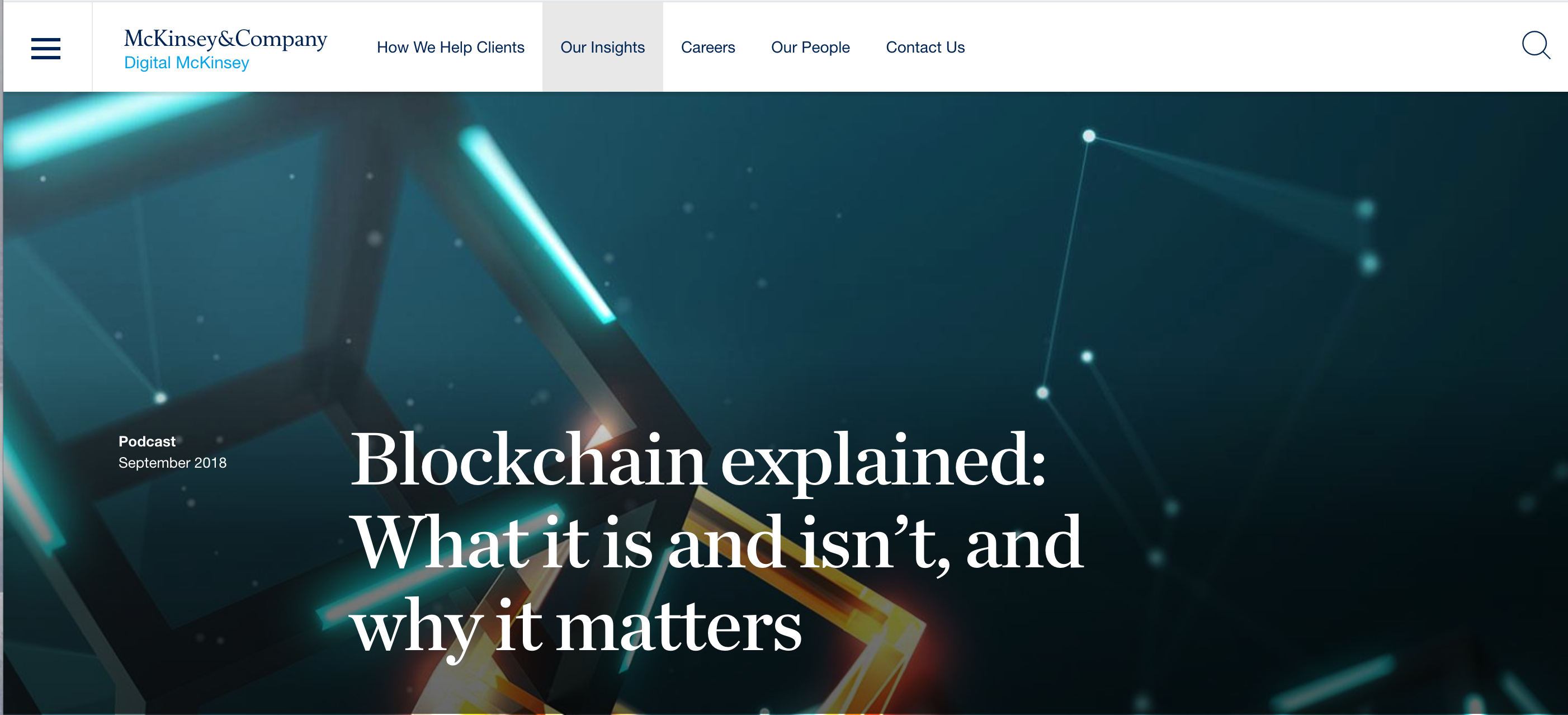Podcasts—Where Are They Now?
Podcasts, like TV shows, are experiencing a renaissance right now—especially those produced by professional services firms. They’ve made a big comeback since the early days of iTunes, when listeners on a budget considered them to be free alternatives to media content for-purchase.
While it’s yet to be determined whether the podcasting trend will be more X-Files (#success) or MacGyver (#fail), there are many reasons why professional services firms are leveraging podcasts as thought leadership vehicles. When you look at the fundamentals, it’s not too hard to see why:
1. They’re easy to consume
With podcasts, your attention-short listeners don’t have to do any of that pesky reading stuff. They can listen with no hands, and they can take them on-the-go.
2. They’re easy to produce
Podcasts are relatively cheap to produce. Plus, beyond a script (optional), there’s no writing, editing, rewriting, or proofreading required. You can quickly create one by recording a conversation—or a soliloquy—and then uploading it to the web.
Why are podcasts so hot right now?
I often cite NPR's Serial podcast as the catalyst for the podcast’s fierce return.

Serial appealed to a broad audience across the socioeconomic spectrum. It was captivating. It was sophisticated. It was descriptive storytelling with a compelling narrative and attention to detail that helped listeners to clearly visualize the characters and their respective plights. It went viral and became conversation starter on the subway, the dinner table, and the board room.
As its sensation took hold, marketing and communications professionals began to reexamine and reconsider the value of the podcast medium as a thought leadership platform.
How can podcasts be incorporated into an existing content strategy?
Thankfully, most professional services firms don’t have as dramatic or grave a backstory as that of Serial. While that likely means a narrower audience, it doesn’t mean your podcast will be ineffective.
Consider your potential audience in the same way you would a blog or an email newsletter subscribership: it consists of individuals with specific interests who are unlikely to take to a one-size-fits-all approach. Ask yourself, “What’s the focus of my podcast?”
Having a focus on specific topics or trends—whether cannabis, corporate takeovers, cryptocurrency, or cupcakes—will likely result in greater interest from your audience. Another way to think about it, particularly within professional services, is to give a platform to a particular practice area or specialty, e.g., Energy, Real Estate, Innovation. This keeps the podcast from falling into the generic, all-firm catch-all trap and makes it easier for marketers to promote and measure traction.

BCG does a great job of this with its Podcasts from Women@BCG. With topics that include Making the Workplace Work for Dual-Career Couples; Why Women-Owned Startups Are a Better Bet; and Measuring What Matters in Gender Diversity, the firm examines gender diversity through the podcast medium as a segment of a broader content strategy.
How can our firm create a podcast?
To create a podcast, record an MP3 file of your show’s host and expert panel discussing a subject. (Again, the participants, structure, format, polish, and topic are flexible and up to you!)
Once recorded, you will want to make the episode available to your listeners. Apple iTunes, via iTunes Connect, and Google Play are the generally accepted outlets to consider. However, you will require an RSS feed to get them uploaded. If you can already add your podcast to your website—which I recommend, more on that below— an RSS feed of the podcast information can be created.
RubyApps is particularly adept at spinning up podcast RSS feeds, which include links to RubyApps-hosted podcast audio files. This functionality allows contributors to quickly establish a subscriber base with fans. As the number of podcasts grow, RubyApps makes adding and updating existing podcasts as easy as sharing a post on LinkedIn. More, as your content strategy shifts, the podcast functionality is built flexibly to evolve alongside it.
If this isn’t an option for your firm, you can also host, publish, and get an RSS feed for your podcasts using SoundCloud, Libsyn, or Blubrry. This will allow your podcasts to be indexed and searched from dominant podcast directories. For reference, this approach is akin to uploading a video to YouTube before adding it to your website.
What are best practices for implementing podcasts on a website?
I admit, we’re biased; but, we believe it’s critical for professional services firms to implement podcasts via their websites. There are several reasons for this, and an SEO boost is just one. Podcasts can be an alternate mechanism for driving traffic to your brand’s digital assets; far more a benefit to your firm than leading listeners to iTunes. Take advantage of the opportunity to increase your web traffic, while also cross-selling other content on your website.
Adding them to your website will depend on how many podcasts you have, as well as their relative popularity. You’ll want to think about them in relation to whether your firm has a thriving blog, a newsletter, an active newsfeed, and how rigorous the firm is about subscriptions to each.
If your firm’s website has a News, Insights, or relevant Thought Leadership section, it’s the perfect place to add a podcast.

For example, law firm Akin Gump has included podcasts on it Insights and News Search page, while Bryan Cave Leighton Paisner has put its podcast within the Thought Leadership section.
These pages typically funnel visitors to a Podcast Details page, where we recommend the following best practices:
—Include a description of your podcast
—Include an MP3 player or an embedded podcast player to play the podcast
—Place a Subscribe link to your website’s RSS feed, iTunes, and/or Google Play
—Offer a link to for listeners to directly download the podcast
—Include a transcription of the podcast to enhance SEO and accessibility for all site visitors
—List related information, including people, practices, and related podcasts
As your initiative grows, you may consider adding a dedicated landing page for all of your podcasts. This page could showcase all of your podcasts with brief descriptions of each to draw attention and entice listeners.

This approach is common with media outlets, included NPR, MSNBC, and the Wall Street Journal (pictured).
Are podcasts good for SEO?
The short answer: Yes. Having podcasts on your website, where your firm should already boast domain authority, can improve the likelihood of your content being found—particularly if people are searching directly for your podcast’s subject matter.
One way to go a step further is to transcribe the entire podcast on a Podcast Details page and link to the podcast download from there. At a minimum, a brief description of the episode on the Podcast Details page will exhibit important keywords, benefitting your podcast—and your website.
Beyond the SEO benefits, podcasts—and podcast transcriptions—also support accessibility. As an audio medium, podcasts are accessible to people with vision impairments. Their transcriptions, however, are accessible to people with hearing impairments.

McKinsey&Company provides transcriptions to its podcasts, as do law firms like Bryan Cave Leighton Paisner and Steptoe.
Can a podcast’s performance be measured?
Before readying your studio, lining up guests, selecting theme music, and selecting a topic, ensure that you establish measurable goals for your podcast. An obvious metric to consider is subscriber growth over a period of time. This, of course, requires that your podcast includes a subscription link (see above), which will help you to capture and track engagement, as well as assess your return on investment.
From here, you can create a baseline of key performance indicators (KPIs) to evaluate progress. iTunes Subscriptions, Google Analytics, RSS Feed subscriptions, and call-to-action (CTA) sign-ups on your website are additional ways to measure this data.
Where can podcasts go from here?
As we’ve outlined, podcasts are easy to create, easier to consume, and easily one of the choice enhancements to add to your digital content strategy. They support SEO and can also provide greater accessibility for site visitors. That they can also be effectively measured makes them attractive to those making decisions based on hard data.
The only question now is, where can podcasts go from here?


